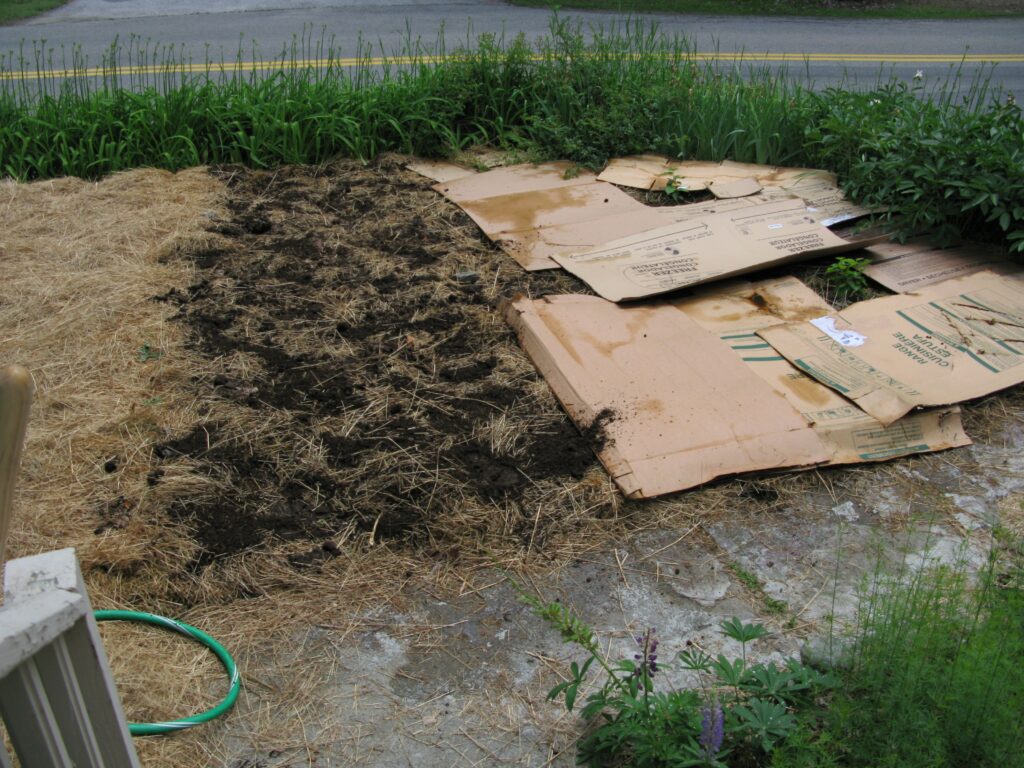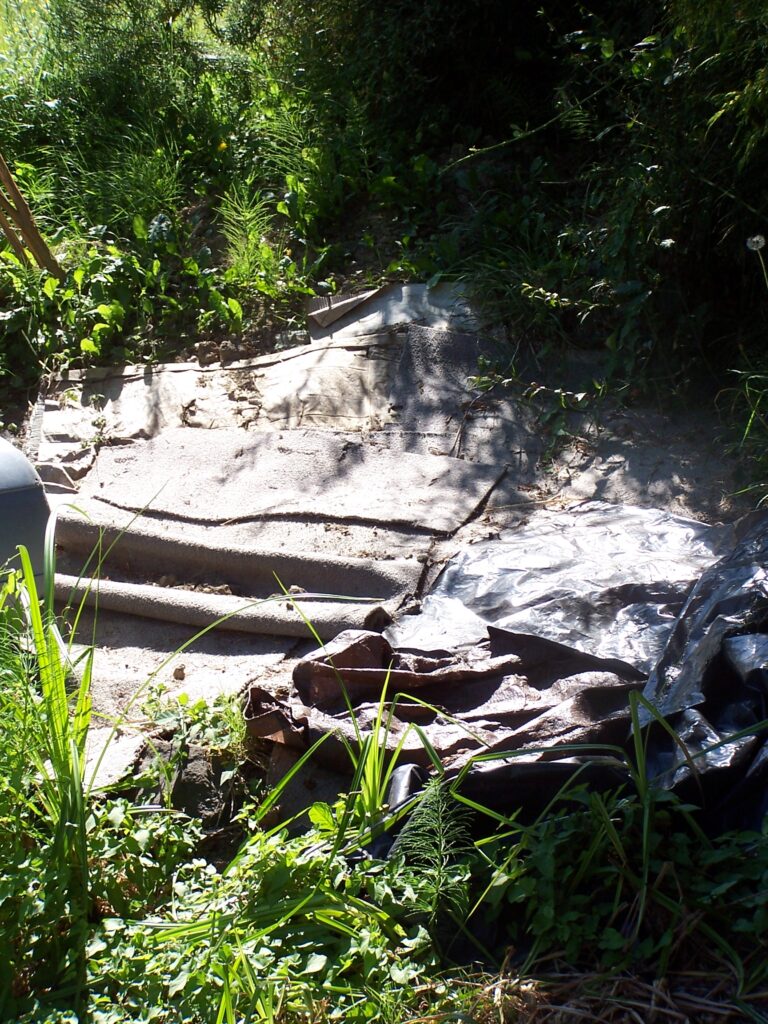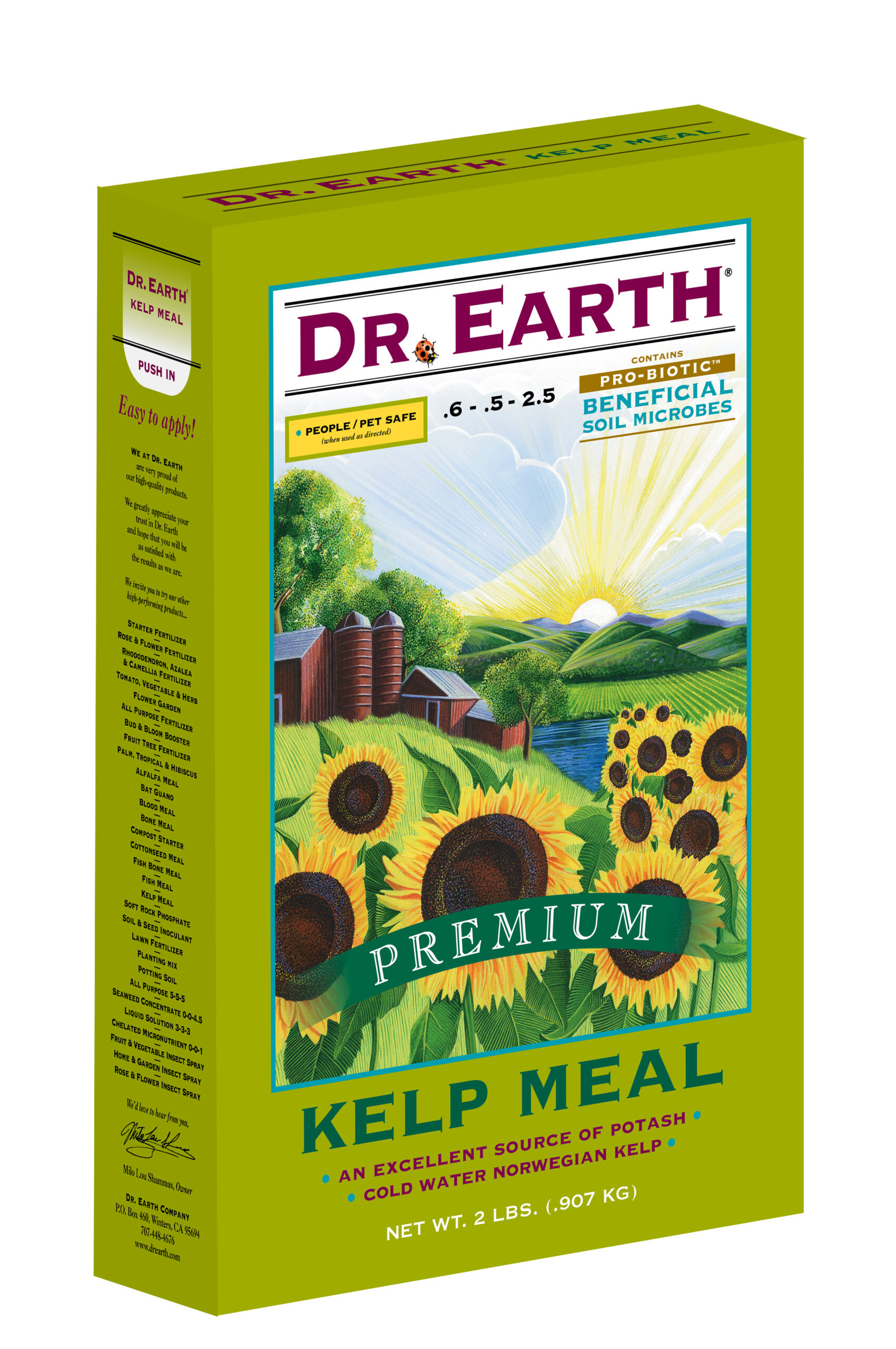
I just returned from one of my self-imposed retreats where I have no cell phone service nor internet. This means I can focus on writing without interruption. One of my projects this year is to publish a scientific critique of permaculture (stay tuned for that late 2023). Part of my process is to read popular permaculture publications and I am focusing on Gaia’s Garden. Earlier I’ve posted some general critiques of the book (you can find them here, here, here, and here), but until yesterday I had missed a big, fat problem: a section labeled “The Power of Sheet Mulch” (pages 71-75 in the first edition).

First of all, let me state that part of permaculture philosophy is to follow nature in our gardening practices. There are few examples of sheet mulching in nature. The only one I can think of occurs in deciduous forests, where fallen leaves can create a sheetlike cover several inches deep. Combined with microbial activity and wetter soils, these sheets create low soil oxygen conditions. During the winter the leaves are broken down and by spring have degraded to the point that air and water movement have resumed enough to support plants as they break dormancy.

In contrast, here’s what permaculture recommends. At the outset, let’s acknowledge that none of the practices discussed remotely resembles any natural process. Furthermore, there are no science-based citations to support the practices or the claims of success. It’s completely anecdotal.
A sidebar provides the methods and materials for constructing the “ultimate, bomb-proof sheet mulch.” Here’s a condensed step-by-step breakdown:
- “Soil amendments, depending on your soil’s needs” are added to the top of the soil before the sheet mulch is applied. How you determine your soil’s needs involves either “us(ing) a soil test or your own understanding of your soil’s fertility to guide the type and quantity of soil amendments.” These include “lime, rock phosphate, bonemeal, rock dust, kelp meal, or blood meal.”
- A “thin layer of high-nitrogen material” is placed on top of the amendments.
- Next we “…apply a layer of weed-suppressing newspaper or cardboard (or even cloth or wool carpet).”
- On top of the sheet mulch another thin layer of high-nitrogen materials is applied.
- Next we are to add “about 8 to 12 inches of loose straw, hay, leaves…” or any other bulk mulch materials recommended.
- Then we should add “an inch or two of compost” or “you can substitute manure or several inches of easily compostable material.”
- Finally “2 inches of…straw, fine bark, wood shavings…” or other listed “weed- and seed-free organic matter” adds the finishing touch.












So. Much. Stuff.
So let’s add this up: a half-inch or more of sheet material, an inch or more of high nitrogen material (from those two additions), 8-12 inches of bulk mulch, another 1-2 inches of compost (or several inches of the substitute), and 2 inches of “the finished look” materials. That’s at least 12 inches of wet (oh, each layer is sprayed down with water as it’s applied), poorly drained material on top of the soil.
I’m all for following nature in how we manage our gardens and landscapes. But deep sheet mulching isn’t natural. It’s bat-sheet crazy.



do you feel like the voice of one crying in the wilderness?
(soooo much garden “advice” repeats this and soooo many are swallowing it whole and saying it works…)
All the time. It’s beyond my comprehension why people believe their MD and their pets’ DVD but blindly follow self-proclaimed garden experts with no credentials whatsoever.
Thanks for this blog and your commitment to science based practices. I’m a fan of wood chips for mulch but am astonished at the charlatans and snake oil salespeople peddling elixirs and tonics and soil supplements as if we were living at the end of the 19th century.
Agreed, this sounds like a suffocating amount of topical applications — on top of cardboard yet! What are they trying to kill? I understand that removing field grass, turf sods and/or weeds is costly.
It’s either expensive (get someone else to do it) or backbreaking (do it yourself) — so what is practical, efficient and healthy for the soil below that which is desired to be removed? I hope to learn this by following this post from the Garden Professors
If you click on the link in the caption of the second to last photo it will take you to my post that covers this.
Thank you for this invaluable posting. It is critical that we understand what a functional organic layer really is if we want a healthy living soil organism that supports flora, funga and fauna and their ecosystems
Reading the “instructions” and just shaking my head. Even if someone doesn’t understand the soil science, there should at least be some common sense applied to why this is all such a bad idea.
I’m wondering what you would recommend for a way to convert a grass area to a shrub /flower bed?
If you click on the link in the caption of the second to last photo it will take you to my post that covers this.
Excellent work on a topic many are failing.
On my local gardening threads sheet mulching is a hot topic and I can’t bring myself to correct them.
The followers have 12″ of woo between the ears and I am not the one to un-woo them.
I just laugh.
I follow your reasoning and accept your expertise, but would like to ask if you know how mulching without a cardboard layer would work against Bermuda grass. I live in the American Southeast and am trying to start a perennial garden in an established Bermuda grass lawn.
Hi Mary –
It will work, but with two caveats: (1) the lawn must be completely killed. If there is lawn adjacent to the garden area, it will spread right back in there through rhizomes. You will need to establish a physical root barrier. And (2) you need to scalp it to the ground and load on at least 12″ of wood chips. That will prevent light from stimulating new growth and the grass will die of starvation.
You can see the process on this post, too.
Linda,
Thank you so much for all this wonderful advise! I have heard that straw helps amend clay soil. Would it be a good idea to put a layer of straw under the wood chips to prepare soil for planting? I have about 2400 sq ft area in the middle of our circular driveway that I want to do a native shrub & flower garden but the soil is clay about 4 inches down. It is currently grass & weeds that gets mowed. Clatskanie, Oregon. Thanks for any suggestions!
Jonna
Hi Jonna –
Straw is not going to do much of benefit to your soil. The way to improve the tilth of a clay soil is to just use a thick layer of the arborist chips. Put down about a foot of chips and let it sit until fall – which is the best time for planting trees and shrubs. Just pull the chips aside, plant, and replace the chips to cover the disturbed soil.
Thank you so much! Next problem I’m having is that I can’t find arborist chips! I’m in a rural area outside a small town & I have made many calls, inquiries and signed up for “Chip Drop” almost a year ago! Is there anything similar you recommend purchasing from landscaping supplier?
You’re not going to find what you need from suppliers, unless they say they have fresh arborist wood chips. When you sign up for chipdrop or call tree services, offer to pay a nominal fee for the service. You might get something faster that way.
Do you have any recommendations for dealing with Japanese knotweed?
It’s like any other weed that spreads underground: you have to physically isolate your weed population before you can control it. Otherwise, NOTHING will keep it out as it will continue to propagate from healthy plants on adjacent property.
Once you’ve isolated it, mow it to the ground and cover with 12″ of wood chips. It will die once its underground reserves are gone.